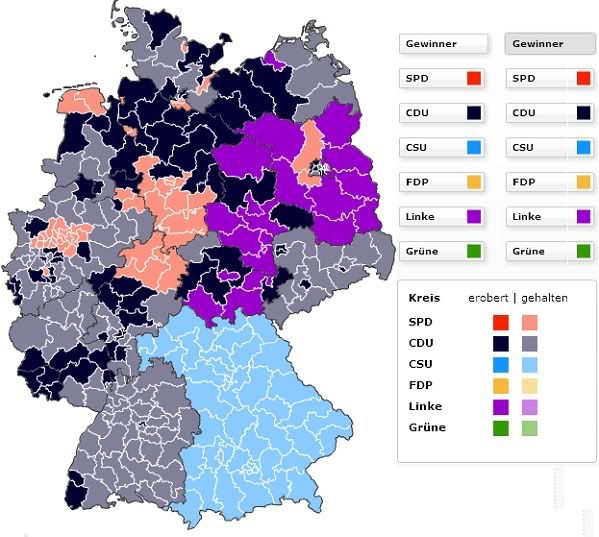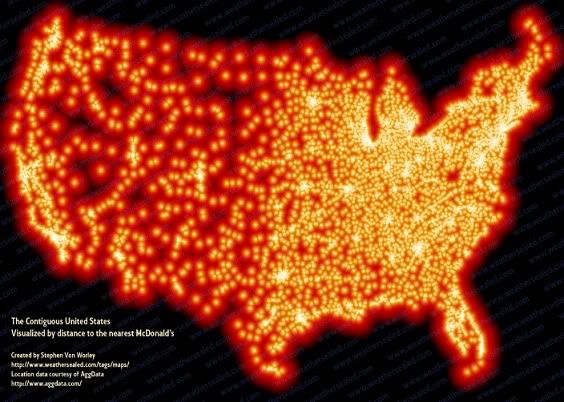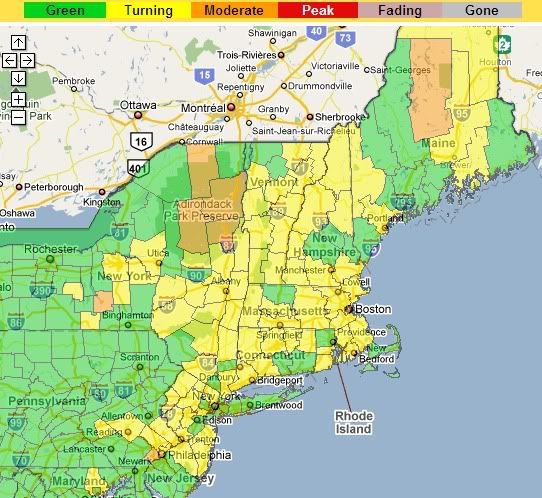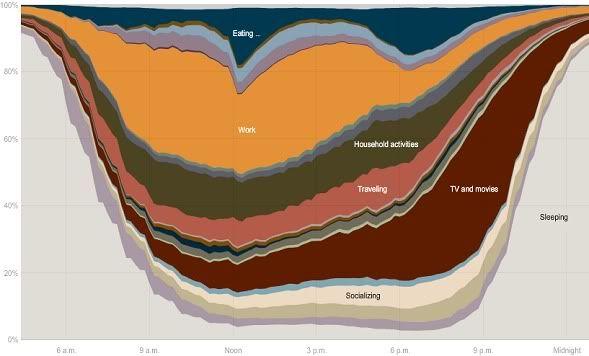
(According to Babel Fish, 'erobert' means 'conquered' (evocative!) and 'gehalten' means 'held,' so you can see where parties made gains, especially the CDU and Linke.)
The link comes from the San Francisco Examiner, which says:
The results are in on Sunday’s elections in Germany, and the big news is that it is a big win for the center-right. In the vote for proportional representation (Zweitstimme), Chancellor Angela Merkel’s Christian Democrats (the Christian Democratic Union and the Bavarian Christian Social Union, CDU/CSU) got 33.8% of the vote and the free-market Free Democrats (FDP), Merkel’s preferred coalition partner, got 14.6%, for a total of 48.4%. The Social Democrrats (SDP) got only 23.0%, their lowest share in history, while the Greens (Grüne) got 10.7% and the Left (Linke, more or less the former Communists) got 11.9%. The SDP has been willing to enter into a coalition with the Greens, as it did in 1998-2005, and with the CDU/CSU, as it has in the so-called Grand Coalition since the 2005 election, but not with the Left.If my brain is functioning properly (not certain!) that means right/center-right parties got 48.4% of the vote, and left/center-left parties got 45.6%.
Both of the two largest parties got smaller percentages than in the last election, in September 2005, but the drop for the CDU/CSU was minimal, while the SDP share dropped from 34.2% to 23.0%--one out of its three voters went elsewhere. The percentages for the three minor parties all rose, with the FDP getting the largest percentage in the 60-year history of the Federal Republic. My sense is that voters in Germany, as in Britain, are engaging here in tactical voting.
You can click on the Interaktive Grafik to see where each parties had strengths. The Christian Democrats did best in northwestern Germany, but showed strength in the southwest and parts of the east as well. The CSU, which appears to stand in relation to the CDU in Bavaria as the DFL party stands in relation to the Democrats in Minnesota, did well on their home turf. The Free Democrats did best in the south and in Schleswig-Holstein in the north. The opposition Social Democrats, who sort of tanked a little, had their best showing in the west, especially in Hessen, Nordrhein-Westfalen, and Niedersachsen. Linke, a left-wing party, did best in East Germany but poorly pretty much everywhere else. The Green Party, kind of oddly, did best in many of the same regions as the Free Democrats; those areas appear to be amenable to third parties, for whatever reason. They also did wellish in and around Berlin.
Michael Barone, the author of the Examiner article, notes: "What strikes me as uncanny is that the CDU/CSU tends to win in the historically Catholic parts of Germany (the south, much of the Rhineland) while the SDP and, in 2009, the Left tends to win in the historically Protestant parts of Germany." He's got some other observations about the vote (and also a few dubious conclusions about what this says about Europeans' desires for smaller government).
Meanwhile, Matt Yglesias notes that the Pirate Party got a decent 2% of the vote in their first election. Not bad!




